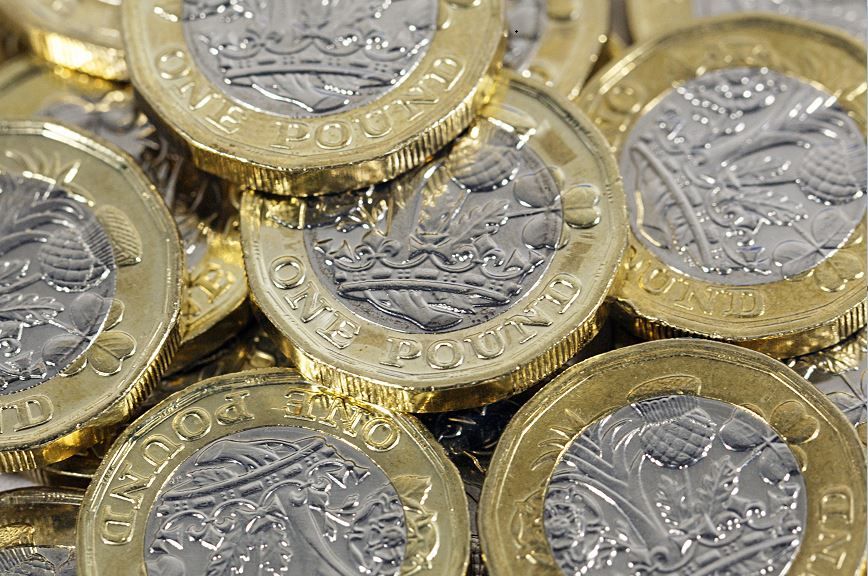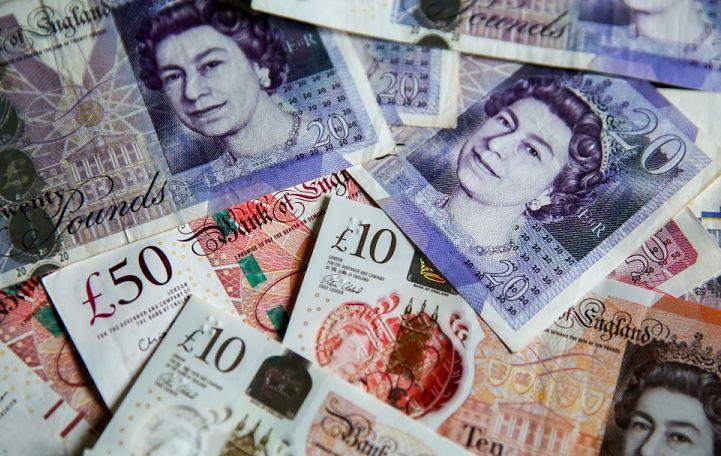
What is the world’s oldest currency?
Read on to discover which is the world’s oldest currency still in use and how it can be traded across the world, as part of a currency pair, forex index or Short Sterling contract.

What is the world’s oldest currency still in use?
The British pound is the world's oldest currency still in use at around 1,200 years old. Dating back to Anglo-Saxon times, the pound has gone through many changes before evolving into the currency we recognise today.
The British pound is both the oldest and one of the most traded currencies in the world. It is currently the fourth most traded currency in the foreign exchange market, after the US dollar (USD), euro (EUR) and Japanese yen (JPY).
History of the British pound sterling (GBP)
Origin
Sterling silver pennies have been around since 775AD, with King Offa of Mercia generally credited with being responsible for the widespread adoption of the coins. The first fully printed banknotes were introduced in 1853. Before that, following its establishment in 1694, the Bank of England only issued partially printed notes with the '£' sign as well as the first digit. The numbers had to be added by hand and each note had to be signed by one of the bank's cashiers. Today's banknotes developed out of these original handwritten notes.
Appearance
Each bank note (£5, £10, £20, £50) has its own colour and size – the greater the value, the larger the note. All coins (1p, 2p, 5p, 10p, 20p, 50p, £1 and £2) carry the profile of Queen Elizabeth II, facing right. Traditionally, monarchs alternate the direction they face on pound coins. The first banknote featuring the Queen's portrait was a £1 note issued in 1960.
Thin metal threads were embedded in banknotes in 1940. This acted as protection against forgery during the Second World War, when the British economy was under threat. The pound is not only used in the UK; variations also circulate in Jersey, Guernsey, Isle of Man, Gibraltar, Falkland Islands, Saint Helena, Ascension, Tristan da Cunha, and South Georgia and the South Sandwich Islands.
Bretton Woods agreement
Until 1940, the British pound was pegged to the value of gold. However, in 1940, an agreement with the US meant that the pound sterling changed to be pegged to the US dollar, as part of the Bretton Woods system which oversaw post-war exchange rates. Between these years until 1971, the pound was continually devalued against the dollar due to economic pressure. Upon breakdown of the Bretton Woods system, the pound became a free-floating currency and many others followed suit, which it remains to this day.
Trade on the British pound sterling (GBP)
Decimalisation
Decimalisation was the biggest change in Britain's monetary system. The pound was divided into 100 pence in 1971. Until then, there were 12 pennies to the shilling and 20 shillings to the pound. The £1 coin was introduced in 1983 to replace the £1 note because coins usually last much longer. At the time, Margaret Thatcher, the prime minister, believed coins were 'not very popular' and the pound note should be retained. £1 notes are still issued in Scotland, Jersey, Guernsey and the Isle of Man, along with the £1 coins, which are more commonly used.
One of the rarest British coins is the 1933 penny. A small number were produced that year because there were already plenty around. In fact, it's estimated that there were only seven coins produced that year and, due to tradition, three of them were buried in the foundation stones of buildings erected in 1933. More recently, the London 2012 Olympics 50p coins proved to be popular among collectors. More than 70% of them have been taken out of circulation, estimates the Royal Mint.
The £2 coin was launched in 1986 to commemorate the 13th Commonwealth Games held in Scotland that year. All pound coins, except the £2 ones, were redesigned in 2008. The six coins, from the 1p through to the 50p, can be pieced together to form the Royal Shield. The £1 coin features the complete shield.
Currency changes
The Bank of England introduced a new 12-sided £1 coin on 28 March 2017, and the previous £1 coin lost its legal tender status at midnight on 15 October 2017. Since then, the Bank has also replaced paper banknotes with plastic notes. A new polymer £5 note was issued in September 2016 and paper £5 notes were withdrawn. Plastic £10 notes were also issued in September 2017 and £20 notes have been following since February 2020. The polymer notes are more durable, stay cleaner for longer and are harder to fake, but have also caused some controversy as they contain a product derived from animal fat.
Competition
For a few years, the euro posed a significant threat to the pound. There was pressure from other EU countries and even within Britain indicating that the UK should adopt the euro currency. Arguably, the pound may outlast the euro, as Europe has seen many recent political instabilities (such as Brexit) that has threatened to potentially tear the eurozone single currency apart.

How to trade on the world’s oldest currency
- Register with CMC Markets. Opening an account will give you access to a demo account first to practise risk-free with virtual funds, or you can deposit funds straight away.
- Choose whether you want to spread bet or trade CFDs. Spread betting is tax-free in the UK* and comes with no hidden fees.
- Pick your instrument. You can speculate on the price of pound sterling via individual currency pairs, Short Sterling contract or our CMC GBP Index. Continue reading below for more information on each individual asset.
- Keep up to date with forex news. This market can be affected by interest rates, inflation and governmental decisions, which will have an impact on your open positions.
- With this in mind, add risk-management controls. Utilising stop-loss orders can help to prevent losses resulting from volatile or unexpected price moves.
GBP currency pairs
As one of the most traded currencies in the world, the British pound features in a number of major, minor and exotic crosses. The table below shows some of the most popular crosses using GBP as both the base and quote currency, along with our spreads and prices.
UK Short Sterling
A three-month interest future contract, UK Short Sterling is based on the ICE Benchmark Administration London interbank offered rate, which is highly correlated to base rates. If the price of the contract changes, this gives indication as to which way interest rates are moving and will continue to go. This includes fluctuating rates from the Bank of England. Read more about our UK Short Sterling – Cash contract.
CMC’s GBP Index
You can also trade on baskets of currency pairs with our exclusive forex index instruments, which includes the CMC GBP Index. This contains a group of currency pairs which share the same base currency, the pound sterling, giving you exposure to multiple currencies vs the pound in one single position. Visit our CMC GBP Index instrument page for more details of constituents, weightings and costs.
Forex index trading
EXCLUSIVE TO CMC
Our forex indices are a collection of related, strategically-selected pairs, grouped into a single basket. Trade on our 12 baskets of FX pairs, including the CMC GBP Index.

FAQ
What is the world’s youngest currency?
The newest currency in the world is the South Sudanese pound, which was made official in June 2011. Other relatively new currencies include the Euro, which was first issued in 1999 and widespread issued in 2002. Despite this, it has quickly become one of the world’s strongest currencies.
Which countries use the pound sterling?
The British pound is used only as a national currency in the United Kingdom and South Georgia and South Sandwich Islands. Other countries to use a version of the pound sterling include Gibraltar, Falkland Islands, and St. Helena.
Is GBP one of the most traded currencies in the world?
The pound sterling is one of the most traded currencies in the world, along with the US dollar, Japanese yen, euro and Swiss franc. See our guide to the most traded forex pairs that comprise of these currencies and more.
*Awarded Best Phone & Email Customer Service, based on highest user satisfaction among spread betters, CFD and FX traders, Investment Trends 2020 UK Leverage Trading Report; No.1 Web-Based Platform and Most Currency Pairs, Forex Brokers 2020 Awards.
**Tax treatment depends on individual circumstances and can change or may differ in a jurisdiction other than the UK.
Disclaimer: CMC Markets is an execution-only service provider. The material (whether or not it states any opinions) is for general information purposes only, and does not take into account your personal circumstances or objectives. Nothing in this material is (or should be considered to be) financial, investment or other advice on which reliance should be placed. No opinion given in the material constitutes a recommendation by CMC Markets or the author that any particular investment, security, transaction or investment strategy is suitable for any specific person. The material has not been prepared in accordance with legal requirements designed to promote the independence of investment research. Although we are not specifically prevented from dealing before providing this material, we do not seek to take advantage of the material prior to its dissemination.

